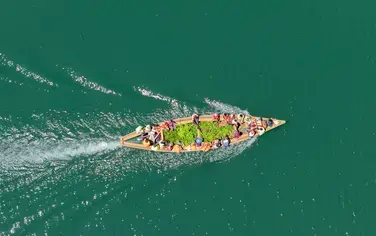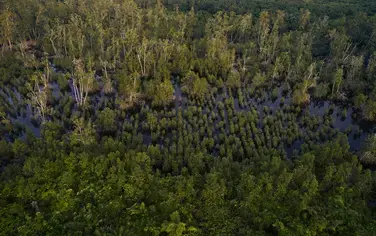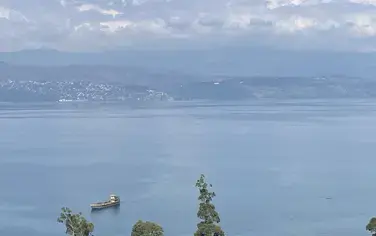his post originally appeared on Landscape News (GLF) here.
NAIROBI (Landscape News) — The Voices of the Landscape plenary at the Global Landscapes Forum (GLF) conference in Nairobi on Wednesday, represented a historic moment: the first time in the forum’s five-year history that a whole plenary has been devoted to the voices of community members directly involved in forest landscape restoration.
As Esther Mwangi, principal scientist at the Center for International Forestry Research (CIFOR) and chair of the session, pointed out, if the African continent is to meet its pledge to restore 100 million hectares by 2030, “communities have a role to play. And, importantly, they’ve already been doing it for decades.”
She sought to draw out tangible – and scalable – lessons from the five panelists, whose restoration work encompasses a range of locations across the breadth of the African continent, from mangrove swamps to high montane forests and dry farmland on the edge of the Sahel.
“OUR TURN”
As Mwangi acknowledged, making restoration happen is hard work, and immediate rewards can be scarce or non-existent. So why bother?
A number of panelists highlighted restoration as a path to community ownership and empowerment in the environments they called home, as well as a means to secure sustainable livelihoods therein. Daniel Kobei, who represented the Ogiek Peoples’ Development Program (OPDP) for indigenous peoples in Kenya’s Mau Forest Complex, described his community’s experience: “We couldn’t just sit there watching people destroy the forest, and waiting for the Kenya Forest Service (KFS) to do something about it. As a community, we realized that it was now our turn.”
In a similar vein, Concepta Mukasa of the Association of Uganda Professional Women in Agriculture and Environment (AUPWAE) attributes the success of her organization’s reforestation work with communities in central Uganda to the dynamic and participatory Adaptive Collaborative Management (ACM) process they used. “We were able to make people realize that they are part and parcel of the restoration process,” she said. “They were able to see that these forests belong to them.” This was particularly significant for women in the area, as it offered an opportunity to transcend old gender norms that obstructed them from planting trees and gaining ownership of those they planted.
Panelist Zipporah Matumbi, founder of the Meru Forest Environmental Conservation and Protection Association (MEFECAP), was motivated to take action to protect and restore Kenya’s Upper Imenti forest when large areas were cut down illegally, and the Meru municipality began dumping rubbish around the water catchment. “As rural women, we struggled a lot, because the water flow went down and there was no firewood. So we had to go long distances to access these resources,” she said, adding, “we communities are very willing to do conservation work, because otherwise we suffer.”
Serge Zoubga, a program officer at Tiipaalga Association in Burkina Faso, and GLF representative of Sahel region reforestation activist El Hadj Zoromé
Alassane, says restoring forests is quite simply “a matter of survival” for communities in the area, which is threatened by desertification. “Otherwise, the conflicts linked to use of land and resources will increase in years to come.”
Haidar El Ali, former president of marine conservation organization Oceanium, and ex-Minister for the Environment and for Fisheries in Senegal, says his own motivation for instigating large-scale mangrove reforestation in the country was linked to his love of Senegal’s land and seas – and of its people. “People need us to help them find workable solutions,” he said. “We need to protect nature to respond to the needs of our populations.”
BIGGER AND FASTER
Grassroots restoration initiatives are crucial starting points, but to address global issues such as climate change mitigation and biodiversity preservation, it’s also necessary to take this work to much bigger scales – and quickly.
According to Mukasa, this upscaling process “can only happen if restoration is taken as a priority at the national and district government level, so that it is allocated more funding for implementation.” This can be encouraged by showing policymakers that restoration is possible with community – and particularly women’s – involvement. In her case, “the success story of our restoration process is inspiring other people to do the same, and to start similar partnerships with the national forestry service,” she described.
Building communities’ capacity for restoration is also key, said Zoubga. “The populations are now aware that they are not doomed, but we need to accompany them with means,” such as providing training and establishing reliable water supplies. This requires ongoing relationships and support: “Trainers cannot stay in an office; they must be next to farmers and follow-up on site,” he said.
Communities also need to experience livelihood benefits associated with restoration in order to value the forests and maintain motivation for conservation and restoration, said El Ali. So it’s important to support the development of profitable initiatives that “piggyback” on successful restoration processes, such as backyard tree nurseries and ecotourism outfits, said Matumbi. Highlighting increases in things like agricultural productivity as a result of restoration is also important. “If we don’t educate younger generations about the value of restoration,” she cautioned, “they will destroy our forest.”
MORE THAN MONEY
However, the panelists agreed that focusing solely on the short-term economic benefits of restoration is not sufficient to create lasting community commitment and change. As Matumbi described, the next generation may then see trees “only as money”, rather than valuing the broader roles they play for climate regulation, water provision and other ecosystem services, as well as for traditional knowledge systems and notions of place.
She closed her commentary with a rallying call that likely resonated across the breadth of the issues being broached at this year’s GLF: “Communities, institutions, governments, NGOs, donors, religious groups, indigenous peoples: let’s build together on existing initiatives; let’s put more efforts into conserving the environment, for us and for coming generations.”




